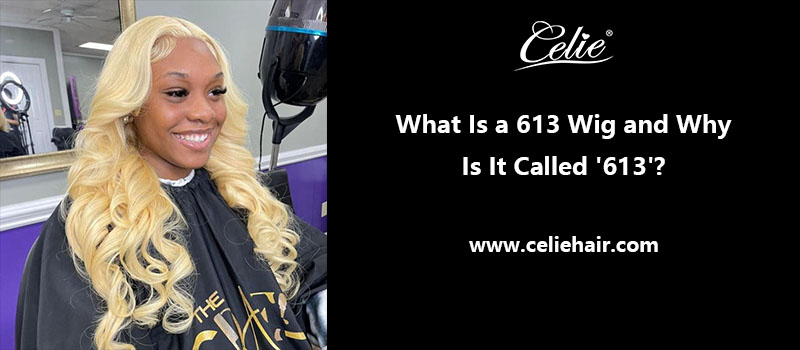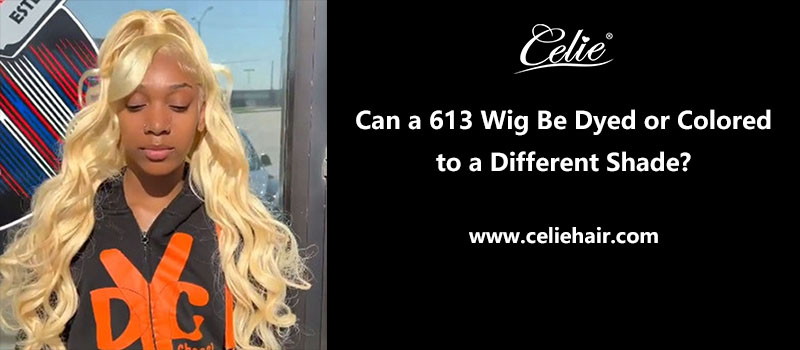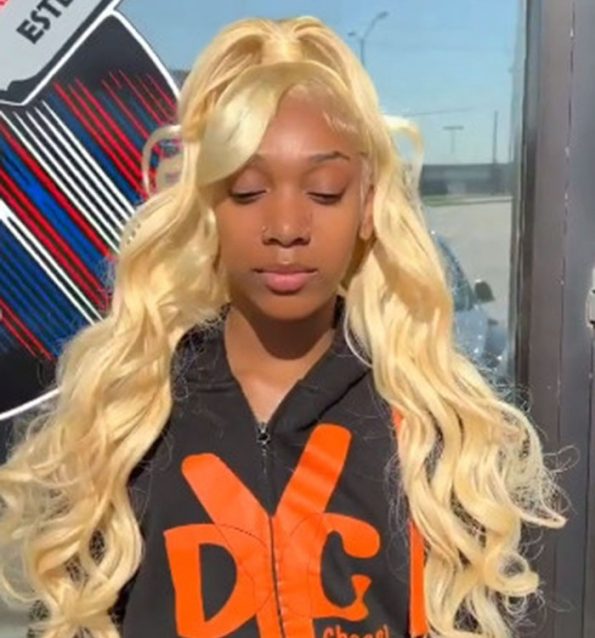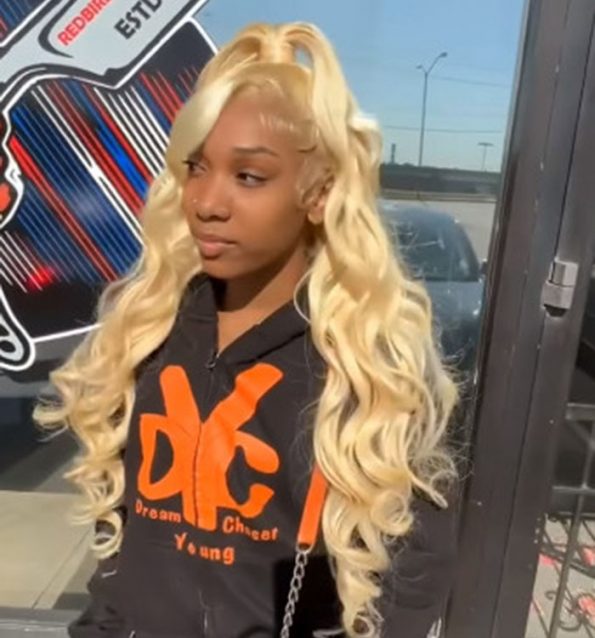The ‘613 wig‘ has emerged as a captivating and enigmatic trend. Its name, ‘613,’ is more than just a number; it represents a specific shade and style that has taken the wig industry by storm. But what exactly is a ‘613 wig,’ and why is it called ‘613’? In this comprehensive article, we will delve into the origins, significance, and style of the ‘613 wig,’ shedding light on its meteoric rise to prominence.
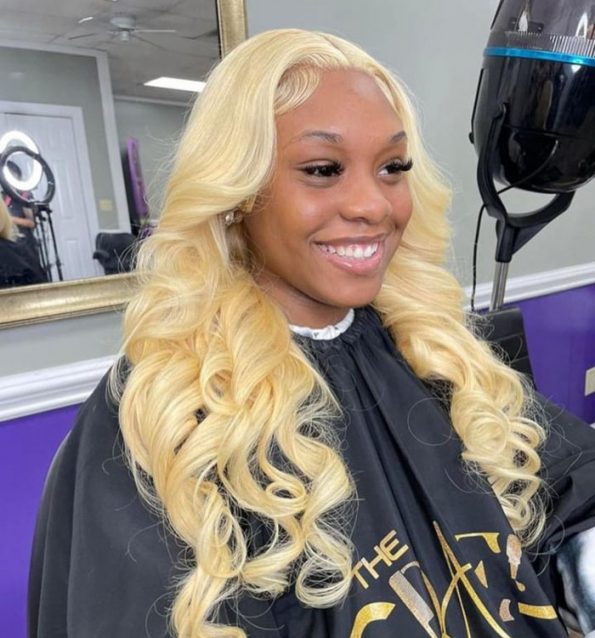
What is 613 in hair?
In the context of hair, “613” typically refers to a specific shade of blonde hair color. This shade is known as “613 blonde” or simply “613.” Here’s what 613 in hair means:
Blonde hair: 613 hair is a type of blonde hair color. It is an extremely light and pale blonde shade.
Platinum blonde: More specifically, 613 hair is often referred to as “platinum blonde.” It is one of the lightest shades of blonde and is characterized by its almost white or silvery appearance.
Cool undertone: 613 hair typically has a cool undertone, which means it has shades of silver, ash, or gray in it. This cool undertone gives it a silvery or ashy appearance, distinguishing it from warmer blonde shades.
Versatility: 613 blonde hair is highly versatile. It serves as an excellent base for various hair color transformations, including pastel colors and vibrant shades. Because of its light base, it allows for bold and colorful hair dye applications.
Popular for styling: Many people choose 613 blonde hair when they want to create dramatic and eye-catching hair looks. It’s a favored choice for individuals looking to experiment with unique and unconventional hair colors.
Maintenance: Achieving and maintaining 613 blonde hair often involves bleaching darker hair to a very light shade, which can be damaging. Proper care and maintenance are crucial to keep the hair looking its best and maintaining its color.
Why is it called ‘613’
The term ‘613’ in the context of hair color, particularly in the world of wigs and hair extensions, refers to a specific shade of blonde hair. It is often called ‘613’ because it is a numerical representation of the color. Here’s why it’s called ‘613’:
Numerical color system: The use of numbers to represent hair colors is a common practice in the hair industry. This numerical system helps standardize and categorize various shades, making it easier for hairstylists, wig manufacturers, and customers to identify and select specific colors.
Representation of the color: In the case of ‘613,’ the numbers ‘6’ and ‘1’ represent the primary tones of the color, and ‘3’ represents the secondary tone or intensity of the shade. In the ‘613’ color, ‘6’ typically signifies the cool or ashy undertone, ‘1’ represents the primary light blonde color, and ‘3’ may indicate the level of intensity, which can vary.
Platinum blonde shade: ‘613’ is commonly used to describe a platinum blonde shade, which is one of the lightest and palest shades of blonde. It is known for its almost white or silvery appearance and is often associated with a cool, ashy undertone.
Ease of identification: Using a numerical system like ‘613’ simplifies the process of identifying and communicating about specific hair colors. It allows people to quickly understand and reference the color without the need for complex descriptions.
Is 613 hair for you?
Deciding whether 613 hair is right for you depends on various factors, including your personal style preferences, maintenance commitment, and how well the color complements your skin tone. Here are some considerations to help you determine if 613 hair is a suitable choice:
1. Style preferences:
Bold and dramatic look: If you enjoy making a bold statement with your hair, 613 hair is an excellent choice. Its striking platinum blonde shade stands out and can be the centerpiece of your look.
2. Skin tone:
Cool undertones: 613 hair with its cool, ashy undertones tends to complement individuals with cool or neutral skin undertones. It may not be as flattering on those with warm undertones, as it can wash out their complexion.
3. Maintenance commitment:
High maintenance: Achieving and maintaining 613 hair often involves a significant amount of maintenance. It typically requires bleaching the hair to a very light shade, which can be damaging. You’ll need to invest in proper care products and touch-ups to keep the color vibrant and healthy.
4. Versatility:
Color experimentation: If you love experimenting with various hair colors, 613 hair serves as an excellent base for vibrant and pastel color transformations. It allows you to easily switch between different looks.
5. Profession and lifestyle:
Consider your environment: Depending on your profession and lifestyle, having such a striking hair color may be acceptable or may require you to consider alternatives for a more subtle appearance.
6. Damage consideration:
Hair health: Bleaching hair to achieve the 613 shade can be damaging, especially for those with dark natural hair. If maintaining healthy hair is a top priority for you, you might want to explore less harsh color options or use 613 hair in the form of wigs or extensions.
7. Skin sensitivity:
Consider skin sensitivity: Some individuals may have sensitive scalps or skin that can react to the chemicals used in the bleaching process. It’s essential to consider your skin’s sensitivity when deciding on such a dramatic hair color change.
What can you do with 613 hair?
613 hair, also known as platinum blonde hair, is incredibly versatile and offers various styling options for those seeking a striking and bold look. Here are some of the things you can do with 613 hair:
Vibrant hair colors: One of the most exciting aspects of 613 hair is its ability to serve as a blank canvas for vibrant hair colors. You can easily dye it into a wide range of striking shades, including pastel hues, vibrant neons, and deep jewel tones.
Ombre and balayage styles: 613 hair can be used to create stunning ombre or balayage styles, where the hair transitions from dark to light or vice versa. This creates a beautiful contrast and adds depth to your hair color.
Trendy hairstyles: Platinum blonde hair is a popular choice for trendy hairstyles. You can style it into beachy waves, sleek straight hair, or glamorous curls, depending on your mood and the occasion.
Colorful highlights: If you prefer a more subtle change, you can use 613 hair for colorful highlights or streaks. This adds a playful and eye-catching element to your hair.
Custom hairpieces: 613 hair can be used to create custom hairpieces such as clip-in extensions, ponytail extensions, or colorful wigs. These accessories can be easily incorporated into your hairstyle for added volume, length, or color accents.
Celebrate special occasions: Platinum blonde hair is perfect for special occasions like weddings, proms, and parties. You can style it into elegant updos, intricate braids, or glamorous curls to create a show-stopping look.
Temporary color changes: If you want to experiment with colorful hair temporarily, you can use temporary hair color sprays, chalks, or hair makeup on your 613 hair. These products allow you to change your hair color for a day or a weekend.
Express your style: Ultimately, 613 hair allows you to express your style and creativity. You can use it to create the hair look that best reflects your personality, mood, and fashion preferences, whether it’s classic and elegant or bold and edgy.
613 vs. 60: What’s the difference?
When comparing hair colors, such as 613 and 60, it’s essential to understand that they represent different shades of blonde. The main difference between these two shades lies in their tone and undertone:
613 hair color:
Platinum blonde: 613 is often referred to as “platinum blonde.” It is an extremely light and almost white shade of blonde. It is characterized by its cool-toned, ashy appearance.
Cool undertone: 613 hair typically has a cool undertone, which means it has shades of silver or ash. This cool undertone gives it a silvery, icy, or ashy appearance.
Versatility: 613 hair is versatile and can be used as a base for various vibrant and pastel hair color transformations. It provides an excellent canvas for creating bold and colorful looks.
60 hair color:
Lightest blonde: 60 is considered the “lightest blonde” shade. It is also very light but has a slightly warmer and more golden tone compared to 613.
Warm undertone: 60 hair has a warm undertone, which means it has shades of yellow or gold. This warm undertone gives it a sunnier and golden appearance.
Natural-looking blonde: 60 is often chosen by individuals who want a blonde hair color that looks more natural and warm without the cool, ashy tones of platinum blonde.
Want a 613 color hair wig? Here’s how to choose one.
If you’re considering a 613 color hair wig, you’re stepping into the world of bold and striking hair fashion. The 613 shade, a beautiful platinum blonde, is known for its versatility and ability to make a statement. Here’s a guide on how to choose the perfect 613 color hair wig:
1. Determine the wig type:
Before diving into the specifics of the 613 color, decide on the type of wig you want. Consider factors like wig material (human hair or synthetic), cap construction (lace front, full lace, monofilament), and wig length (short, medium, or long) based on your preferences and needs.
2. Quality matters:
Invest in a high-quality wig. If you opt for a human hair wig, ensure it’s made from 100% human hair, as this provides the most natural look and feel. Quality synthetic wigs are also available but may require different care.
3. Shade variation:
‘613’ refers to a platinum blonde shade, but there can be variations within this color range. Some ‘613’ wigs may have cooler undertones, while others might be warmer. Choose the shade that complements your skin tone and personal style.
4. Wig cap size:
Select a wig cap size that fits comfortably and securely on your head. A well-fitting wig ensures a natural look and prevents discomfort.
5. Wig density:
Consider the density of the wig, which refers to how thick or thin the hair is. The density you choose should align with your desired look, whether it’s a natural everyday style or a more dramatic appearance.
6. Style and length:
Decide on the style and length of the wig. 613 color wigs come in various styles, including straight, wavy, and curly, as well as lengths ranging from short bobs to flowing locks. Choose a style that complements your face shape and personal taste.
7. Maintenance:
Consider the level of maintenance you’re willing to commit to. Human hair wigs require more care and styling but offer greater versatility, while synthetic wigs are generally low-maintenance.
8. Wig care products:
Invest in wig care products, such as shampoos, conditioners, and heat protectants, specifically designed for 613 color wigs. These products help maintain the vibrancy and texture of the hair.
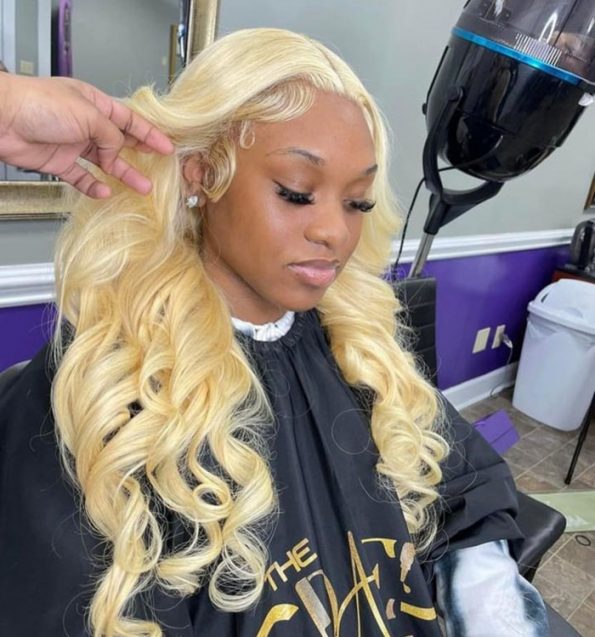
Where I can find top 613 wigs?
When it comes to finding top-quality 613 wigs, one shop that seamlessly blends natural beauty and premium craftsmanship is “Celie Hair“. Celie Hair has gained a reputation for offering some of the finest 613 wigs in the industry. With a commitment to excellence and a wide range of options, Celie Hair provides customers with a diverse selection of 613 wigs, from straight and silky styles to bouncy curls and everything in between. The shop’s dedication to using high-quality materials ensures that their wigs maintain their luster and longevity, making them a go-to destination for those seeking the perfect 613 wig to enhance their beauty and style. Whether you’re looking for a bold transformation or a subtle change, Celie Hair is a trusted source for top-notch 613 wigs that cater to various preferences and tastes.
